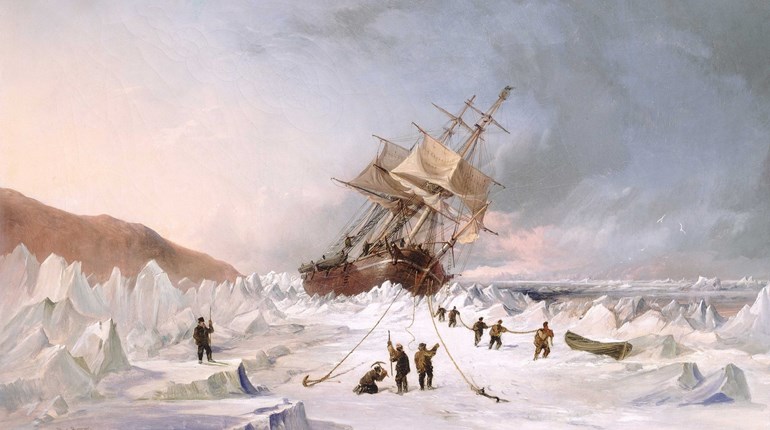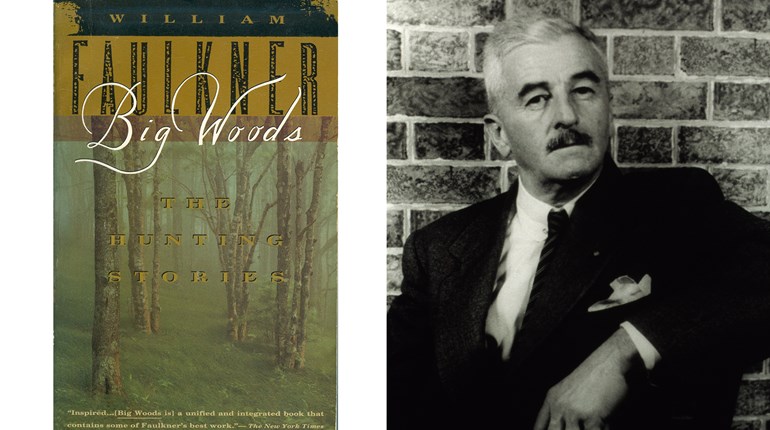
Imagine traveling hundreds of miles on foot or horseback, then taking captive by force someone from another race, culture and language. Then imagine taking your captive back to your home and formally adopting the person into your own family, showing him or her the same love and respect you would shower on your closest relatives.
As unbelievable as that scenario sounds today, such was the custom of many of the Native American Indian tribes living in the Ohio country—that area north of the Ohio River—in the 1700s. Captives were taken by the Indians to replace family members killed in war or who had died of one of the many diseases contracted from Europeans. One of the most famous Indian-captive stories of the frontier is that of Mary Draper Ingles.
On July 8, 1755, Mary was living with her husband and their two young sons in western Virginia, part of a small settlement of log cabins on the west slopes of the Allegheny Mountains known as Draper’s Meadows. She was nine months pregnant at the time and not feeling well. Her body was telling her that her third child would be born soon, probably within the next few days.
Mary knew something was terribly wrong that Sunday morning when she heard screams suddenly coming from her brother and sister-in-law’s nearby cabin. Looking out of the doorway of her own cabin, she saw Indians, a dozen or more armed and painted Shawnee warriors, approaching the settlement at a dead run.
In the few minutes of the melee that followed, Mary’s life changed forever. Her mother, who had been picking berries nearby accompanied by Mary’s two sons, was killed and scalped. Her sister-in-law (Bettie Draper) was shot in the arm, then Bettie’s infant was yanked away from her by a warrior. Swung by its feet, the baby’s brains were bashed out on a wall of one of the cabins.
Mary’s only consolation was that her husband, Will, was working in a distant field so was not present at the time of attack. Mary knew that if he had been, he would have fought the overwhelming number of warriors to protect his family and likely been killed.
Within minutes, the Shawnees rounded up five captives: Mary, her two young sons, Mary’s wounded sister-in-law Bettie, and a young man who lived in the settlement by the name of Henry Lenard.
The Indians wasted no time in getting away from Draper’s Meadows with their captives, fully expecting to be pursued as soon as word of the massacre spread. The Indians had made the raid as part of their involvement in the French and Indian War (1754-1763). The Shawnees had thrown their support to the French, who encouraged them to raid English settlements far to the east, along the Alleghenies.
The Indians and their captives moved swiftly the first few days, then the pace slowed somewhat. During that time, Mary was permitted to ride a horse because of her obvious pregnancy. But it wasn’t long before her labor pains began, and on the third day out she gave birth to the baby along the wilderness trail. Still fearing attack, the Indians had her back on a horse and moving west, her baby at her breast, the very next morning.
It took about a month’s travel, but the group finally arrived at Lower Shawnee Town, a large village of thousands of Indians living along the Scioto River, a tributary of the Ohio River along its north shore. There, Mary’s two young sons were taken from her and adopted by a sub-chief. Since she was breastfeeding she was allowed to keep the baby, but Mary and her daughter were sold to two French traders living in the village.
At the Shawnee town, the captives met other captives from similar raids, one of which was a large, old Dutch woman who spoke broken English, her name lost to history. It was this Dutch woman who would accompany Mary on her attempted escape and return to Draper’s Meadows.
The opportunity came several months later, when a group of the Shawnees took Mary and the Dutch woman with them on a salt-making trip. Salt was precious on the frontier for preserving meat, and it was a laborious, time-consuming process to procure. In essence, the two white women would be used as slaves to boil down saltwater until it turned granular.
The salt-makers canoed their way down the Scioto to the Ohio River, then a hundred miles farther downstream to a salt spring in what one day would become Kentucky. The group planned to camp and make salt for several weeks. It was during this time that Mary and the Dutch woman waited for the right opportunity, stole a tomahawk, then quickly and silently disappeared into the wilderness.
The only vague directions Mary remembered from her trip to the Shawnee town was that they had followed the New River downstream to the Ohio River, then downstream to the Scioto. Mary knew that if she followed the Ohio upstream and could find the mouth of the New River entering along its south bank, she could then follow it upstream back home. But she also knew it would be a trip of 500 to 600 miles at least, on foot, and through a howling wilderness.
It had been a gut-wrenching decision for Mary Ingles. She instinctively knew her baby would not survive the grueling ordeal, so she left her in the care of a Shawnee woman, knowing she would likely never see her tiny daughter again.
To complicate their escape, Mary and the Dutch woman had no way of crossing rivers they came upon, as neither of them could swim. That meant that when they came to a tributary river or deep stream, they would have to follow its banks upstream until they could find a shallow place to wade across, then hike back down the other side before resuming their trek along the main river.
Their epic journey back to Draper’s Meadows is now one of frontier legend. It took them some 43 days during the cold, rain, snow and ice of mid to late fall, and their only food was what they could scavenge: nuts, berries, roots, and at one point the rotting flesh from a deer head they found.
They eventually made it back to white civilization, but just barely. Sometime during their last week in the wilderness, the old Dutch woman went mad from hunger and tried to kill Mary to eat her. Mary was able to fight her off, cross the New River in an old, dilapidated canoe she found, and the two then spent the last days of their journey paralleling each other on opposite sides of the river.
Mary arrived at Draper’s Meadows a few days before the old Dutch woman, naked and literally skin and bones, a walking skeleton. In addition, her feet and hands were swollen nearly twice their normal size from innumerable cuts, scrapes and bruises. Her long brown hair had turned white during her six-week ordeal and remained that way the rest of her life.
As for the others of her family taken captive from Draper’s Meadows, Mary’s younger son, George, who was just two years old when taken, sickened and died soon after being separated from his mother. But Mary’s older son, Thomas, who was four when taken, grew up a Shawnee and was ransomed back to his white family at age 17 for $150.
However, reentering white culture was not an easy adjustment for Thomas, as it was not for other young captives who had spent most of their life with the Shawnees. He could speak no English, only Shawnee, and would frequently go off into the woods alone to hunt. Later in life, he even went back to the Ohio country to visit the Shawnees a time or two. Mary’s sister-in-law, Bettie Draper, was ransomed back to her husband, Mary’s brother, after seven years in captivity.
During the French and Indian War, an estimated 2,000 prisoners were taken captive by the Indians: male and female, young and old, black and white. If they were not strong enough to keep up the pace of travel or complained during the trip to the Indian towns, they were tomahawked and scalped along the trail. And simply making it to the Indian villages was no guarantee of survival. Upon arrival, most captives were forced to run a gauntlet. If they survived that—and many captives didn’t—they would either be adopted into Indian families, sold as slaves, or sentenced to death, usually by burning at the stake.
Mary Draper Ingles was one of the lucky ones—she survived. She lived to age 83 and she and husband Will had four more children, three girls and a boy. Sadly, they never knew what became of the baby daughter Mary left behind in the wilderness in the care of the Shawnee woman.
If you’d like to read more about Mary Draper Ingles’ captivity and epic journey home, the book titled Follow the River by James Alexander Thom is highly recommended.














































